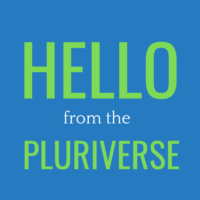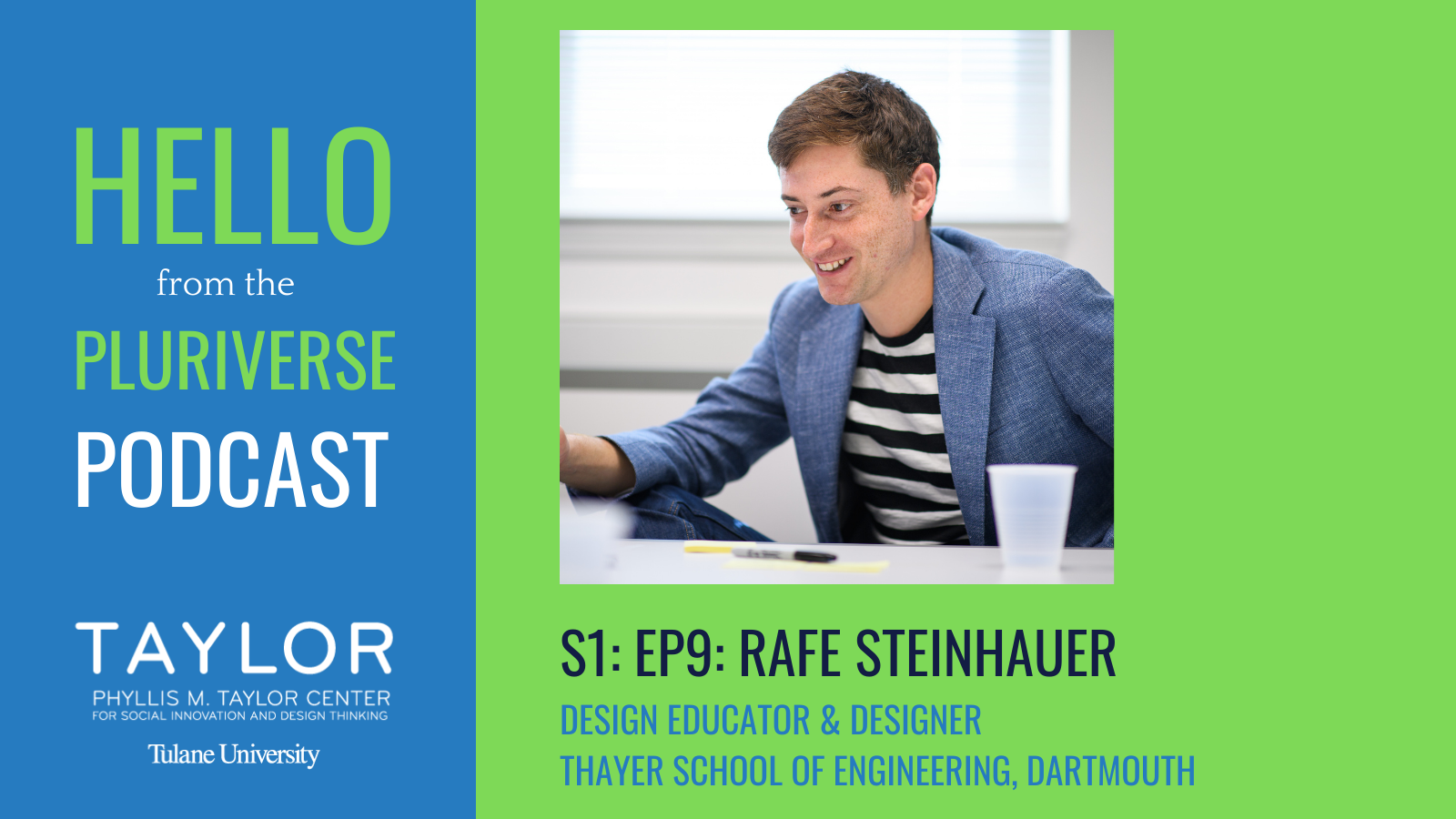Rafe Steinhauer is a design educator and a designer. Currently he is a visiting assistant professor at Thayer School of Engineering at Dartmouth, but he has also been a visiting assistant professor with the Phyllis M. Taylor Center for Social Innovation and Design Thinking at Tulane University in New Orleans and a lecturer at Princeton University. Introduced to design thinking in his graduate studies, Rafe has incorporated it into his classes to help his students experience the type of growth he had when he first learned about design thinking. Design educator is not the only role Rafe plays though; community design work has created opportunities for him to step into the role of designer where he can work with communities to create programs that resonate with the needs and wants of those community members.
Connect with Rafe Steinhauer:
Pluriverse Publication Chapter: Rafe Steinhauer
Written by Delaney Connor and edited by Natalie Hudanick
Download a PDF Layout of the Rafe Steinhauer chapter in the Pluriverse Publication
Rafe Steinhauer is a visiting assistant professor of design thinking at the Phyllis M. Taylor Center for Design Thinking and Social Innovation at Tulane University. He has been a lecturer at Princeton University for the past four years, where he was teaching a design thinking class called “Creativity, Innovation, and Design”, which is an introductory class for undergraduate students that includes an individual lab-based experience about individual and group creativity in the first half of the semester, and then in the second half, Rafe introduced design and design thinking to the students by giving them a “wicked problem” on campus, such as sexual misconduct, for them to address using design thinking.
Rafe explains that he got into design thinking during his graduate studies. Design thinking resonated with him for two reasons. The first reason was that design thinking explained why his first company failed; Rafe further explained that the first company he cofounded—which built fundraising software for small and midsized nonprofit organizations—failed because he went about developing it the wrong way. He had the idea, developed the software, and spent a lot of money, time, and energy convincing nonprofits that the software would help them. Rafe mentioned that this is the “anti–design” approach; had he taken a design approach he would have gotten to know the users for whom he was designing the software before actually starting the software development process. The second reason why design thinking resonated with Rafe was because, when he took his first class in design thinking in his MBA program, he felt changes in his own cognitive and metacognitive growth that were the same goals he was trying to learn how to teach through his Master of Education. Rafe believes that design thinking is an effective pedagogy for getting at the types of growth he wants all students to experience in their education.
When asked for his definition of design thinking, Rafe first explained design thinking in terms of its history, then related it to the scientific method: “design thinking is to the design disciplines what the scientific method is to the scientific disciplines.” Just as the scientific method has a generalized process, a transdisciplinary toolkit, and deduction and induction as core ways of thinking, design thinking also has a generalized process, a transdisciplinary toolkit, and abductive reasoning as a core way of thinking. Rafe describes “abductive reasoning” by talking more about design thinking. He explains that design thinking is about immersing in the world; generating hypotheses for how to make the world better; and testing those hypotheses. It’s about creating value for people.
One of the most interesting points that Rafe and I talked about was the role that his identity has played in his design work, and he described two instances that displayed this. He discussed his recent experience as a visiting professor coming to Tulane this past fall [2019]. Since coming to New Orleans and Tulane University, Rafe has felt more like an outsider. He mentioned he is hypersensitive about his identity because he came to New Orleans to help do community design work, but because Rafe feels that he has no intuitive understanding of what people, who live in this diverse city that is New Orleans, are looking for or need in order for him to design a program that resonates with their needs. He had to have the mindset of a “beginner” in this environment. Rafe also discussed how his identity affected design thinking from a philosophical point of view. He explains that typically the first thing that comes to our minds when we say identity is demographic identifiers, like race, sex, gender, etc., but in reality, though, identity is the experience of living in different ways. Rafe further explained that identity is about how people construct the narrative of their experiences and understand their world with things that are important for them, like being healthy and exercising, rather than solely identifying themselves based on what they write down on paper to identify themselves in society.
When Rafe was asked about what he thought, as a design thinker, of how non-designers react to design thinking, he mentioned that wherever or whenever he did a design thinking workshop to introduce people to design thinking, he had the same breakdown of reactions to it. One quarter of the people in the workshop thought it was a complete waste of time and had a lot of skepticism about the process and its validity. Half of the people in the workshop were interested in how they can use design thinking in their own disciplines. But it is the last quarter of people who have a more emotional reaction and fascination to design thinking, wanting to apply it to all the aspects of their lives.
Rafe’s advice for non-designers is based on how they want to apply design thinking tools. His advice for students who are non-designers is to take a course that could greatly impact their lives. For example, he mentioned Tulane’s Taylor Your Life, a course that helps students decide what career paths they might take to help create the type of impacts in the world they might want to have. He also recommends for students to read design thinking books, like Designing Your Life by Bill Burnett and Dave Evans, and also complete the exercises in it and see how that might help you. Rafe also mentioned that his advice for people who will use, or who currently use, design thinking tools is to get to know the stakeholders with whom they’re working with by conducting a contextual interview. He explained that interviewing stakeholders intentionally with open ended questions will help a person understand how the stakeholders are constructing their own existence, and therefore, is a powerful design thinking tool that you could start with.
- Instagram: @hellopluriverse
- Twitter: @hellopluriverse
- Email: taylor@tulane.edu
- Subscribe to our newsletter
The Hello from the Pluriverse Podcast aims to open up and create a space to have conservations about the pluriversality in design.
This podcast is a project of the Design Thinking for Social Innovation Program at the Phyllis M. Taylor Center for Social Innovation and Design Thinking at Tulane University.
Executive Producer: Lesley-Ann Noel, Ph.D
Sound editing
- Max Esperance
- Lavonte Lucas: xn--vonni-fsa.com, Instagram: @vonnieradass, Twitter: @vonnieradass
Hello from the Pluriverse 2020-2021 Student Team
- Max Esperance – Podcast lead
- Natalie Hudanick and Michaeline Anglemire – Editors
- Tiwani Oseni – Communications
Hello from the Pluriverse 2019-2020 Student Team

